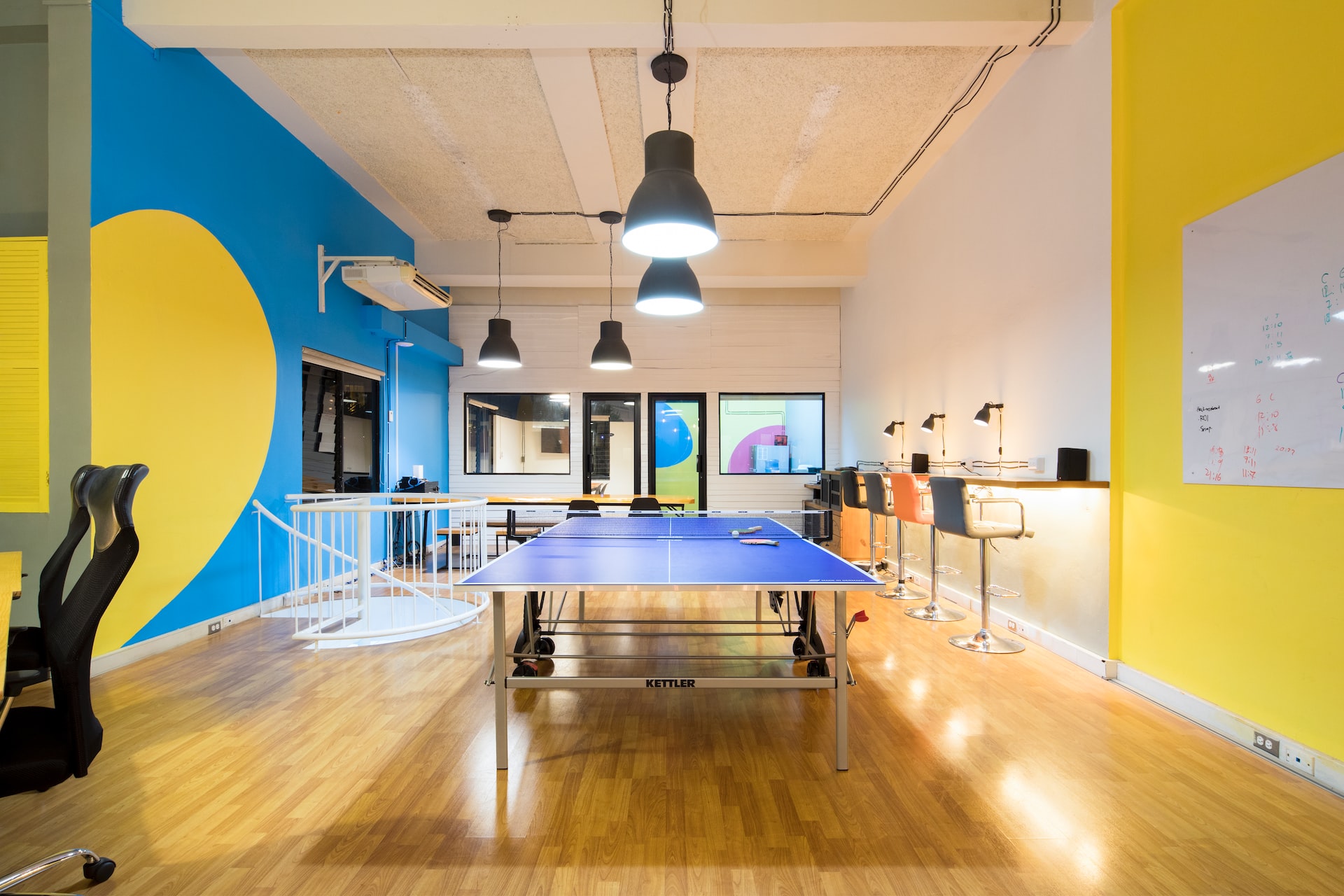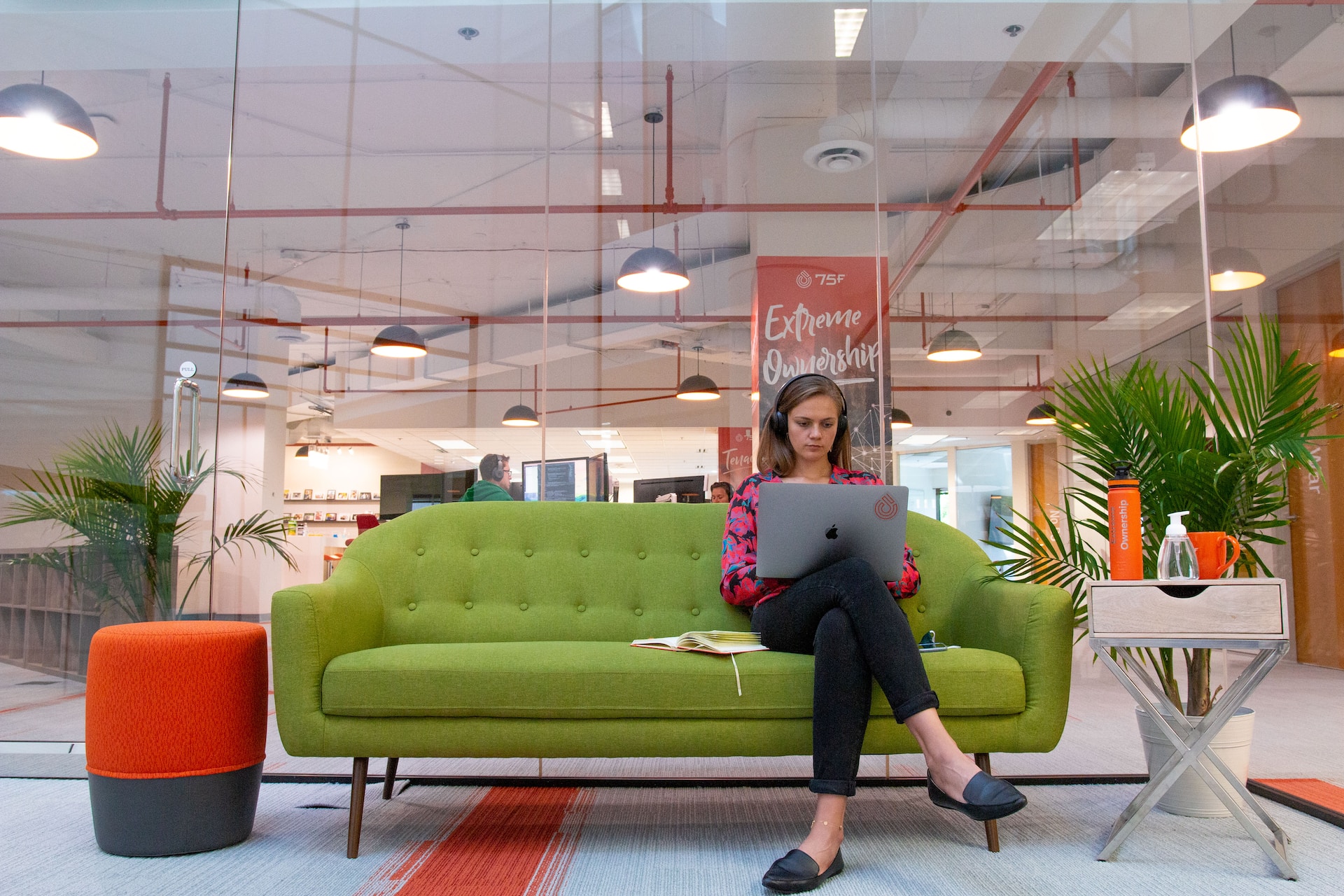What Do Employees REALLY Want Their Office to Look Like?

We’ve all seen the articles about workplaces that are part-office, part-playground. The ball pits, the helter skelter slides, the hot air balloon meeting pods. And while the headlines of these articles generally run the gamut of ‘World’s Coolest Offices!’ to ‘Stupid Perks That Nobody Asked For!’ where does the average office worker lie on this scale?
Do people really want to slide down a fireman’s pole to get from one floor to another or hold an end of quarter crisis meeting from the comfort of a seat made from truck tires?
Since the tech boom of the mid 1990’s, companies in this sector seemed to be trying to outdo one another with workplace design that screamed “Come and work for us - we have basketball hoops in the break room!”
And as the news of the new Fun Office started to spread among other industries, business leaders across other sectors started trying to inject a little playfulness into their working environments.
Read more: 11 Office Design Ideas to Inspire & Motivate Your Teams
Granted, many of these were not quite as far out as Google’s nightclub-slash-jamming-room but bosses were falling over themselves to jump on the brightly colored bandwagon with dart boards, pool tables, table football and the like.
And with the benefit of hindsight, most of us would probably agree that the novelty of these ‘cool office perks’ wore off pretty quickly. Which brings us to the question…
What do employees REALLY want their office to look like?
The majority of modern offices are built with an open plan layout. The days of cubicles and separate offices for managers are on their way out. And you’ll probably find that most employees would rather work from an open and airy space rather than be shut in a pokey office or consigned to a solo cubicle.
Open plan offices certainly look more stylish - but how good are they when it comes to ensuring employee satisfaction and productivity?
There are definite pros and cons to the open plan design. Let’s take a look:
The pros of open plan offices
- They encourage coworkers to talk to each other in person, creating greater team spirit.
- This also means that questions can be answered and issues solved more rapidly - there’s no waiting for hours for a reply to an email.
- Messages can be passed on quicker and information relayed more accurately in person.
- They allow managers and leaders to be more hands on (and also discreetly keep an eye on their team!)
- They get rid of that outdated (in many industries) sense of hierarchy as everyone is working together.
- There are physically less walls so the space is lighter, brighter and more welcoming.
And now let’s look at some of the cons of open plan workspaces.
The cons of open plan offices
- They can make it hard to tune out loud or disruptive coworkers.
- They can be distracting due to being surrounded by constant movement and activity.
- They can make taking a private or confidential phone conversation less convenient.
- They can make it difficult to focus when everyone is so readily available to one another.
- There is always the inevitable argument over the temperature of the heating or air conditioning!
- They can make it harder to contain illnesses - if someone comes in sick, everyone is at risk of catching it.
Ultimately which side of the open plan fence you fall is up to your business’s owner or top level managers and while it goes without saying that nobody wants to work in a dimly lit broom cupboard with no windows, what do the majority of people want from their company in terms of workspace, lighting and decoration?
Meeting pods that are disguised as rowing boats? Or just a nice, airy atmosphere?
The benefits of a well thought out office
For a space to be well designed and conducive to productivity, it needs to provide a combination of a number of things. It needs to be functional. It needs to allow for collaboration. It needs areas where people can focus on the job in hand.
It also needs to be welcoming and be somewhere where people don’t hate spending the majority of their time!
Many forward-thinking companies these days are moving away from the ultra-gimmicks that the late 90’s told us were cool to instead focus on features that help people work better.
From the contemporary - think mediation pods to the downright simple - hello houseplants. These things that help us feel grounded and positive are becoming the new norm.
In fact, a study showed that people who work in offices with plenty of plant life and greenery experienced a 15% increase in productivity over a three month period when compared to those who worked without any natural elements in their environment.
And as this article from Inc. explains:
“...plants are commonly used to reduce noise pollution along highways and interstates. Using this same concept, plants in the workplace will change your room's acoustics by reducing reverberation time. If you place plants in larger areas such as reception spaces containing hardwood floors, open office layouts featuring concrete or marble, or employee lounge areas or cafeterias, they will effectively absorb noises which can be distracting and hurt employee productivity.”
In addition to this:
“Plants or green walls can also increase oxygen and airflow, making the immediate surroundings feel fresher and more breathable.”
So if your people are working in an environment that makes them feel more productive it stands to reason that they’re likely to be feeling more positive, energetic and engaged.
Company culture versus gimmicks
The majority of your employees aren’t expecting to come to work to have an absolute blast. And a fancy office with all the bells and whistles doesn’t necessarily equal a happy and productive team if the company culture’s just not there.
You can provide all the darts boards and funky furnishings you like but if your people don’t feel valued and recognized for the work they do, it’s a moot point.
Most people can see through gimmicky perks and are actually just happy with a comfortable chair, a decent coffee machine, free snacks and/or soda, an attractive and pleasant working environment, and - crucially - a company culture that respects them as people, not just ‘human resources.’
Pick an employee at random. What do you think they would prefer? Playing a game of table tennis during their lunch break, or leaving an hour early to beat the commuter traffic? We’re betting it’s the latter.
What do employees REALLY want their office to look like? Conclusion
People stay with their employers for a number of reasons: Salary and benefits, the people they work with, a sense of purpose which aligns with your mission, the opportunities for growth, and being recognized.
Of course, an attractive and well equipped workspace (with plenty of plants!) is important, but it needs to go hand in hand with the company’s values and employee recognition programs.
After all, all the popcorn machines and quirky meeting rooms in the world won’t make up for poor pay and a leadership style that doesn’t value its employees.

Eve Church
I'm a UK-based content writer here at Hezum. I've an interest in all things HR and company culture.
United Kingdom


